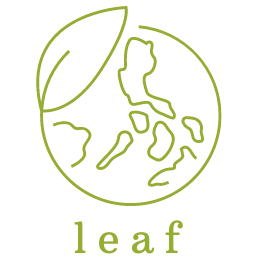The LEAF handbook
COMPETENCE FRAMEWORK

Why the competence framework?
Overall aim of the LEAF project Handbook is to improve the teaching experience by providing a set of tools and resources that can make lessons engaging and offer more in-depth, STEAM based, systemic knowledge on local biodiversity, based on constant outdoor investigation and practical experiences in the local community.
The idea behind the framework
This document is a conceptual framework, based on more comprehensive frameworks of the European Commission:
- GreenComp. The European sustainability competence framework.
- LifeComp. A European competence framework for better lives in our uncertain world
- European Framework for the Digital Competence of Educators: DigCompEdu
- DigComp: The Digital Competence Framework for citizens
It is non-prescriptive, and it can be used as a basis for the development of Nature-oriented curricula and learning activities.
The aim is to educate students and the community in the spirit of environmental values so as to live a responsible, sustainable life, while thriving as individuals, responsible citizens and reflective lifelong learners.
You can discover which general competences are developed by following activities presented in the Handbook below –
GENERAL COMPETENCES DEVELOPED
From an integrated, general competence perspective, our handbook contributes to developing:
- Scientific Literacy:
- Understanding fundamental concepts of botany, ecology, and plant biology.
- Grasping the significance of biodiversity in ecosystems.
- Critical Thinking:
- Analyzing the impact of human activities on plant biodiversity.
- Evaluating the importance of conservation efforts.
- Laboratory Skills:
- Developing practical skills through hands-on lab works.
- Conducting experiments and making observations related to plant life.
- Environmental Awareness:
- Appreciating the role of plants in environmental sustainability.
- Recognizing the consequences of biodiversity loss on ecosystems.
- Research Skills:
- Accessing and synthesizing information on plant diversity.
- Formulating and testing hypotheses related to plant biology.
- Problem-Solving:
- Identifying challenges and proposing solutions for the conservation of plant biodiversity.
- Applying knowledge to address real-world environmental issues.
- Teamwork and Collaboration:
- Engaging in collaborative lab activities and group projects.
- Sharing ideas and perspectives on biodiversity conservation.
- Ethical Awareness:
- Understanding the ethical considerations in biodiversity conservation.
- Recognizing the responsibility to protect and preserve plant life.
- Lifelong Learning:
- Fostering a curiosity and enthusiasm for continued learning about plants and ecosystems.
- Developing the skills to stay informed about advancements in plant science
Green competences developed
From a filtered, synthetic Green Competence perspective, the following specific competences are developed, according to the detailed description by modules:
- 1. Embodying sustainability values
- 2. Embracing complexity in sustainability
- 3. Envisioning sustainable futures
- 4. Acting for sustainability
|
1.1 Valuing sustainability |
Reflection on, identification and explanation of values related to sustainability |
|
1.3 Promoting nature |
Acknowledging the role humans in nature and respecting the role and needs of other species and nature itself in order to restore healthy ecosystems |
|
2.1 System thinking |
Contextual approach and consideration of all factors when analyzing sustainability issues |
|
2.2 Critical thinking |
Assessment of information and arguments, challenging of assumptions and theories, consider factors that influence conclusions |
|
2.3 Problem framing |
Formulating current and potential challenges to sustainability |
|
3.1 Future literacy |
Imagining alternative scenarios and identification of steps for a more sustainable future |
|
3.3 Exploratory thinking |
Exploring and linking disciplines and linking creative ideas and methods |
|
4.2 Collective action |
Acting for change in collaboration |
|
4.3 Individual Initiative |
Identifying own potential for sustainability and contributing actively to improving the future of the planet |
How is it done?
If you are wondering how the content of the handbook contributes to the development of the aforementioned competencies, you can find a detailed description and clear links in the table below –
- 1. Embodying sustainability values
- 2. Embracing complexity in sustainability
- 3. Envisioning sustainable futures
- 4. Acting for sustainability
Module 1 : Urban parks and forests
- Analysis of parks and gardens as part of the European urbanizing landscapes, in a context of planning for sustainable biodiversity and relating to multifunctional land use.
- Analysis of the parks and forests integrated in the urban landscapes of Suceava.
- Analysis of the landscapes’ evolution monitoring the biodiversity of parks and gardens.
- Identification of European urban landscapes of parks and forests, from the perspective of the importance of the species persistence influencing the habitat quality, the amount and configuration of the habitat and the permeability of the landscapes.
Module 2: Protected Natural Areas
- Overview of the protected natural areas worldwide, including the history, statistics per continent and their importance in the preservation of biodiversity.
- Analysis of protected natural areas in Europe and more specifically in Greece.
Module 3: Water Plant Biodiversity
- Overview of the water plant biodiversity worldwide and importance in the preservation of water plant biodiversity.
- Overview of Protected Natural water and Protected water in Serbia
Module 4: Boosting digital skills of teacher for a better communication and collaboration
- Analysis of the importance of digital skills in the school environment
Module 5: Cooperation with local community
- Analysis of the importance of an inclusive approach and involving local community in sustainable actions
- Identification of ways to inform and involve relevant stakeholders in a green project/program.
Module 6: Climate change and urban biodiversity
- Presentation of the mechanisms of climate change, the human activities at the origin but also the international political response and the commitments made by the states and local governments.
- Inventory of the trajectories of emissions and the consequences on our ecosystems in terms of adaptation.
- Inventory of the realities of climate change through theoretical and scientific knowledge such as the Intergovernmental Panel on Climate Change (IPCC) reports, the Sustainable Development Goals, the climate change international negotiations agenda
- Analysis of the realities of biodiversity through theoretical and scientific knowledge such as the Intergovernmental Science-Policy Platform on Biodiversity and Ecosystem Services (IPBES) reports, the Sustainable Development Goals and the international negotiations agenda
- Identification of the role of biodiversity as a cornerstone to mitigate these changes while also creating a significant number of co-benefits both in terms of adaptation and resilience with, among other, nature-based solution.
- Urban parks and forests analyzed by applying a questionnaire and comparing the results.
- By social science methods, investigation of the effect of biodiversity on human health and wellbeing.
- Assessment of actions aimed at increasing the green areas allocated to the citizens of each country in the current context of climate and geopolitical changes.
- Identification by teachers and students of specific local resources, so that, at a global level, the risks of biodiversity loss are increasingly reduced, through concrete activities, field applications.
- Assessment of the role of the quality of the natural environments, by investigating the beneficial effects of the activity in allotments or domestic gardens on health and wellbeing
- Evaluation of the greater positive effect of the natural environments in comparison to the built-in environments on human restoration and wellbeing.
- Evaluation of impact of professional practices and knowledge in the interaction through digital technologies.
- Assessment of how climate change is altering territories: rising sea levels, increased extreme weather events, higher temperatures, water shortage…
- Evaluation of how climate change is accelerating the loss of biodiversity and leading to increased degradation of ecosystems, vulnerability of food production, threat to human well-being.
- Evaluation of current challenges of urban planning to answer climate change and how climate change impact cities (soil vulnerability, urban heat islands, urban sprawl…).
- Evaluation of the relationship between the stress reduction and the visual perception of the natural environments and future measures
- Identification of possible causal mechanisms linking species richness and wellbeing to the garden context and urban green spaces in general/possible steps (M1)
- Identification of a set of resources related to protected areas to include in teaching (M2)
- Get involved with the local community (M3)
- Ideas promoting ‘green’ attitudes in the use of digital technologies (M4)
- Ideas to organize and manage digital workspaces in the school
- Ideas on how to advocate important topics in local community and in front of decision makers (M5)
- Ideas on Biodiversity in the city: how to use it to regenerate the city by finding alternatives to solutions that have become obsolete; green frames, greening of urban furniture/buildings, eco pastoralism, recreating urban beehives… with adaptable examples at local, national, and international levels
- Understand and practice in the territory: how to observe changes as a secondary school student? To question oneself and the local actors and inhabitants to better understand the multi-systemic evolution in their community
- Cross-reference of the multi-systemic issues that territories face in order to rethink their planning with sustainable alternatives (M6)
- Practical implementation cases – students ‘activities in Suceava’s Parks, forests and gardens (Romania)
- Practical implementation cases and students’ activities on local protected natural areas to deliver in class (Greece)
- Practical activities related to water plant biodiversity for teachers to use in the class (Serbia)
- Let’s get practical! Hands-on activities for teachers (Serbia)
- Hands-on activities for teachers for Collaboration and sharing through digital resources – keeping it ‘green’ (Italy)
- Plan on how to efficiently engage with local community and relevant stakeholders active in it (Croatia)
- Put into practice – immersion in the understanding of territorial change through interaction with local stakeholders and inhabitants and by observing the cycle of nature and the biodiversity in its immediate environment (France)

This project has been co-funded with support from the European Commission. This communication reflects the views only of the author, and the Commission cannot be held responsible for any use that may be made of the information contained therein.
Project N°:2022-1-RO01-KA220-SCH-000086884
